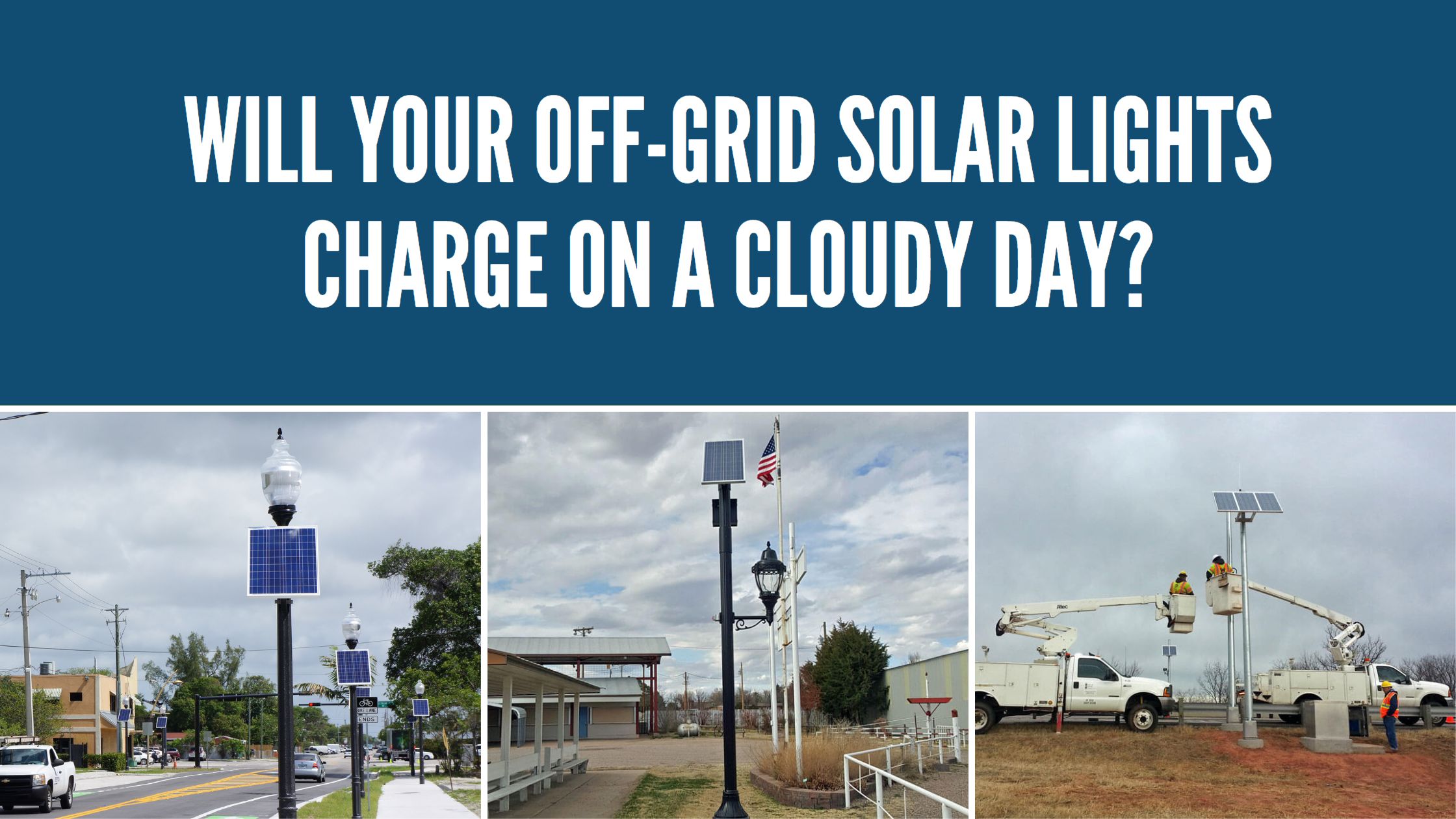Will Your Off-Grid Solar Lights Charge on a Cloudy Day?

Contents
Solar lights are a popular choice for outdoor lighting because they are environmentally friendly, cost-effective, and easy to install. However, a common concern among solar light owners is whether or not their lights will still charge on cloudy or overcast days.
The short answer is yes; solar lights can still charge on cloudy days. Although the charging rate will be slower compared to sunny days, there is still some charge happening. This is because the amount of sunlight that reaches the solar panel on a cloudy day is reduced, thus reducing the amount of energy available for the light to charge.
However, it is important to note that the weather does not solely determine the efficiency of solar lights. Other factors can affect the charging rate, including the orientation and angle of the solar panel, the location of the light, and the size of the solar panel.
How Solar Panels Function
First, I think it is best to take a closer look at how solar panels function. Solar panels function by converting the energy from sunlight into electrical energy. On sunny days, the sunlight is strong and provides ample energy to the solar panels, which can be stored in a battery for use later.
However, on cloudy days, the amount of sunlight that reaches the solar panels is reduced, which means that the energy generated is also reduced. This can cause the charging rate to slow down, but it does not mean that the solar panels cannot generate any energy at all. In fact, solar panels can still generate some energy on cloudy days because the clouds still allow some light to pass through.
Solar Efficiency in Cloudy Conditions
The efficiency of solar panels in cloudy conditions depends on several factors. For example, thick clouds can reduce the amount of light that reaches the solar panels, making it difficult for the panels to generate energy. On the other hand, thin clouds can scatter the sunlight, allowing it to reach the solar panels from different angles.
It is also important to consider the location of the solar panels and the orientation of the panels. For example, suppose the solar panels are located in a region that is frequently cloudy. In that case, it is recommended to choose panels with a larger surface area so that they can generate more energy even in cloudy conditions. Additionally, adjusting the angle of the panels to maximize their exposure to the sun can also help improve their efficiency in cloudy conditions.
While the efficiency of solar panels may be reduced in cloudy conditions, they can still generate some energy on cloudy days. Choosing panels with a larger surface area, optimizing their orientation, and choosing a location with less frequent clouds can all help to improve the efficiency of solar panels in cloudy conditions.
Providing Backup for Solar Lights
If you live in an area with frequent cloudy or overcast days, choosing a solar light with a larger solar panel and a high-capacity battery is recommended. This will ensure that the light will continue to function even on days when the sun is not shining as brightly.
In areas with frequent cloudy days, having a larger battery capacity for solar storage is crucial for the health of the solar system. This is because the battery acts as a backup to store the energy generated by the solar panels during sunny days so that it can be used during cloudy or overcast days when the amount of energy generated by the solar panels is reduced.
If the battery capacity is too small, it may not be able to store enough energy to keep the lights or other devices powered during cloudy days. This can lead to frequent power outages, which can be frustrating and may also damage the equipment that is connected to the solar system.
On the other hand, a larger battery capacity provides a buffer that ensures that the lights and other devices continue to work even on cloudy days. This not only improves the overall reliability of the solar system but also ensures that the lights and other devices are always available when they are needed.
In addition, a larger battery capacity also allows for more energy to be stored during sunny days, which can be used during periods of extended cloudiness or inclement weather. This can help maximize the solar system's efficiency and reduce the need for backup power sources such as generators.
Increasing the battery capacity for solar storage is key for the health of the solar system in cloudy areas. A larger battery capacity provides a backup for energy storage during cloudy days, improves the system's overall reliability, and maximizes the efficiency of the solar panels.
Solar Panel Angle & Orientation
Solar lights' optimum angle and orientation are important factors that can impact their performance and efficiency. For example, a SEPCO solar lighting system uses an angle of 45 degree tilt on our solar panels because this works well for southern and northern climates. A flat mount panel should only ever be used in climates that receive no snow or along the equator.
The orientation of the solar panels refers to the direction in which they are facing. The best orientation is towards the south in the northern hemisphere and towards the north in the southern hemisphere. This helps to maximize the amount of sunlight that the panels receive, especially during the winter months when the sun is lower in the sky.
It is also important to consider the shading that may impact the panels, such as trees, buildings, and other structures. Any shading can reduce the amount of sunlight that reaches the panels, thus reducing their efficiency. Therefore, it is recommended to place the panels in an area with minimal shading or to adjust their angle and orientation to minimize the shading.
How Shade Affects Solar Lights
Shading is one of the biggest factors that can impact the performance and efficiency of solar lights. When the solar panels are shaded, the amount of sunlight that reaches the panels is reduced; however, because of how solar panels are designed, a small amount of shade can cause a panel to not function at all.
The effects of shading can vary depending on the intensity of the shading, the duration of the shading, and the time of day. For example, shading that occurs early in the morning or late in the afternoon may have a greater impact on the performance of the solar lights compared to shading that occurs in the middle of the day. However, any shading can greatly impact the performance of an off-grid solar light.
In addition to reducing the amount of energy that is generated, shading can also cause hotspots on the solar panels. Hotspots are areas of the panels that receive more sunlight than other areas, which can result in higher temperatures and decreased performance.
It is important to minimize the impact of shading on solar lights by adjusting the angle and orientation of the panels or by placing them in an area with minimal shading. If shading cannot be avoided, it is recommended to use micro-inverters or optimizers that can help to manage the effects of shading on individual panels and improve the overall performance and efficiency of the solar lights. Another option is to remotely mount the solar panel in a sunny location and route the wire to the fixture or equipment where it needs to be located.
In conclusion, while solar lights can still charge on cloudy days, the charging rate will be slower. To ensure that your solar lights continue to work efficiently, it is important to choose a light with a large solar panel and a high-capacity battery. Additionally, consider the orientation and angle of the solar panel, as well as the location of the light.

